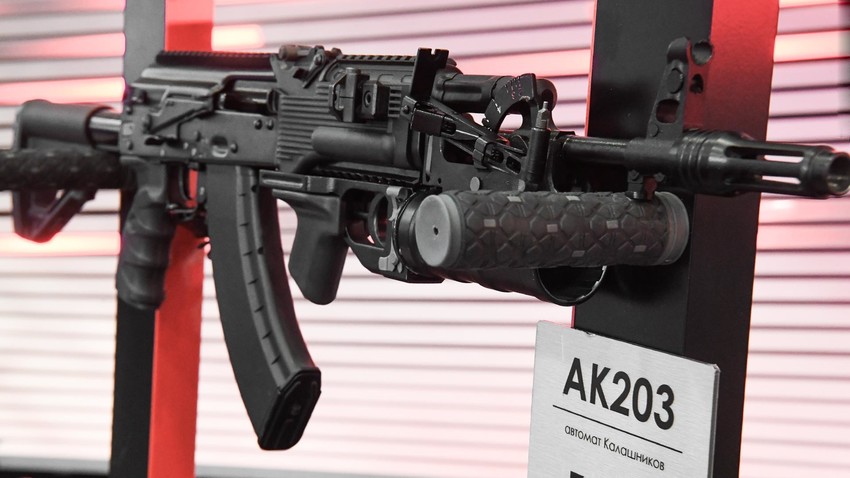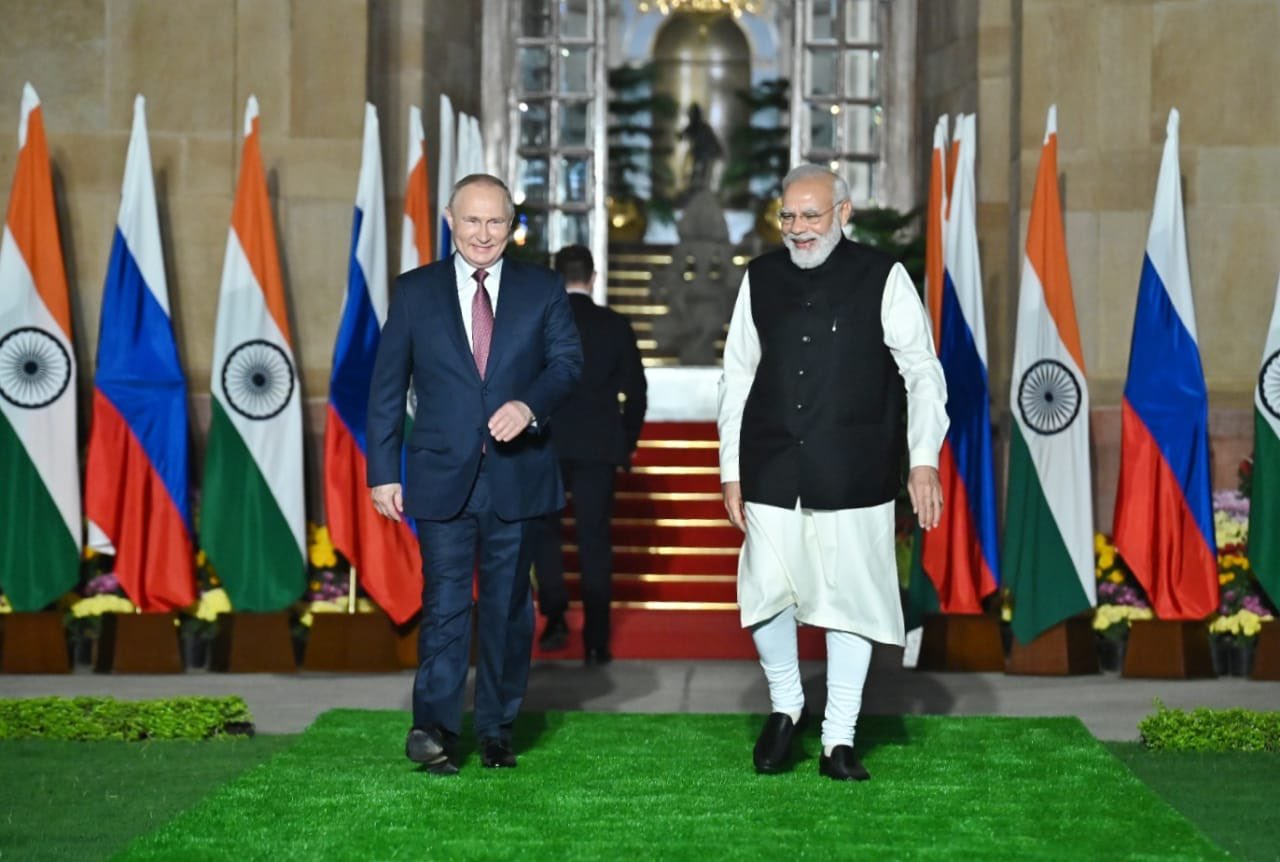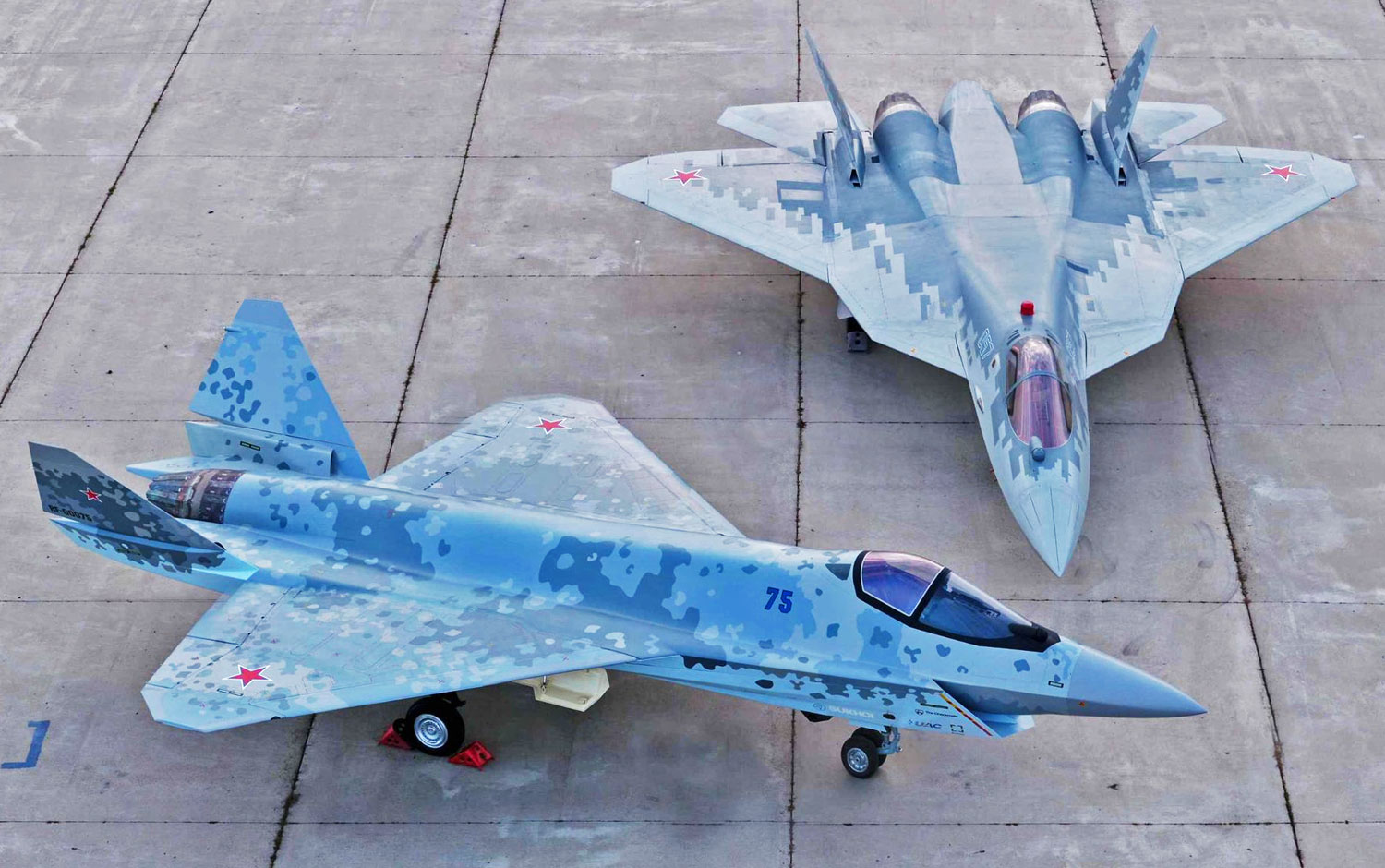Following a wave of sanctions imposed on Russia by Western countries in response to its invasion of Ukraine, India’s long-standing reliance on Moscow for defense supplies is being called into question.
-
1000+ Killed! Why Did US Navy Torpedo ‘Montevideo Maru’ That Remains Australia’s Worst Maritime Disaster
-
Used From Chernobyl To China, US’ Brand New ‘Nuke-Sniffing’ WC-135R Constant Phoenix Jet Completes Maiden Test Flight
India and Russia have had a military relationship back to the Soviet era. The Stockholm International Peace Research Institute estimates that of the $13.2 billion in weaponry India imported between 2016 and 2022, 49% was supplied by Russia.
Israel came in second with 13%, France came in third with 18%, and the US came in fourth with 11%. India has refrained from criticizing Russia for invading Ukraine and the ensuing conflict, while most of the world community remains hostile toward Russia.
Similarly, the American think-tank Stimson Center 2020 stated that the percentage of Russian-produced weapons in India’s defense equipment is nearly 86%.
Over the past decade, India tried diversifying its military equipment purchases. Nevertheless, Russian weaponry continues to be the foundation of India’s military establishment.
India is reaching out to Israel, the United States, and Europe to lessen its reliance on Russian weapons. The conflict in Ukraine has highlighted the consequences of leaning too much on one partner.
Also, China, which India views as its biggest threat due to the ongoing border conflict, has moved closer to Russia due to the war. It also compels India to think about reducing its dependence on Russia.
India-Russia Relationship
With transactions allegedly worth up to $15 billion still in the works, India and Russia still have significant defense relations. In particular, the $5 billion deal for five long-range ground-to-air S-400 Triumf missile systems may be hampered by the sanctions. The US has previously voiced its opposition to the agreement.
In 2021, the Cabinet Committee on Security (CCS), under the leadership of Prime Minister Narendra Modi, approved a plan to manufacture more than 500,000 AK-203 assault rifles in collaboration with Russia. Hailed as a movement toward “Make in India,” the two nations also referred to it as evidence of their strong relationship.
After a deadly border skirmish with China in 2020, India even approved the purchase of 21 MiG-29 aircraft and 12 Su-30 fighters for a total of 181.48 billion rupees ($2.43 billion). There are a few more notable agreements India has with Russia, and New Delhi depends on Russian defense products such as combat tanks, planes, and missile systems.

The nation’s Navy’s sole operational aircraft carrier is a refurbished Soviet-era vessel. All its ground and fighter assault aircraft are manufactured in Russia or licensed for production in India.
Additionally, four of the Navy’s ten guided-missile destroyers and six of its 17 frigates are Russian Talwar-class vessels. The only nuclear-powered submarine in the Navy has been leased from Russia.
Most Indian Air Force’s (IAF) fighter squadrons fly Russian aircraft, including about 272 multi-role Su-30MKI fighters. The IAF employs more than 100 MiG 21 “Bis” aircraft.
Former Indian Air Force fighter pilot and military analyst Vijender K Thakur says, “India also purchases weapons from Western countries. However, if Russian military equipment is more affordable, such equipment will be purchased from Russia. And I don’t believe that the maintenance of Russian weaponry purchased by India will be affected by the sanctions.”
India-Russia Payment System
The Indian military relies on Russian weapons systems in the short and medium-term, according to a US Congressional report from October 2021, and cannot function effectively without it.
However, the report shows that India’s defense trade with Russia had steadily declined since 2014 when the Crimea crisis between Russia and Western powers started.
New Delhi continues to rely on Moscow and is required to make payments amid sanctions. Experts predict that western sanctions on Russian banking channels could affect India’s ability to make payments and, as a result, delay the overall process. Two nations are already making efforts to find a solution to this situation.

Reportedly, Indian banks like Canara Bank, Bank of Maharashtra, and UCO Bank are likely to cooperate with Russian banks that are not subject to Western sanctions to ease bilateral payments.
The report said that these Indian banks would probably open accounts with their Russian counterparts and vice versa, as discussed last week in meetings held in New Delhi, to maintain seamless trade flows without breaching the economic sanctions on Russia.
It was decided at the meeting that the banks of the two nations would create three different sorts of accounts with each other called Loro, Vostro, and Nostro. India is also working to ensure that Russia does not lose any significant defense deals due to financial sanctions.
Impact On Ongoing Deals
The ongoing negotiations between India and Russia on significant defense transactions have recently been fraught with uncertainty. It is challenging to link these concerns and the Western sanctions against Russia.
The procurement of more MiG-29 and Sukhoi-30 fighter jets and Ka-226T utility helicopters from Russia, for instance, is doubtful. However, as of yet, these plans have not been abandoned.
Experts believe New Delhi favors Russian weaponry because it is less expensive than its western counterparts.
Thakur said that 114 fighter aircraft are to be purchased for Indian Air Force as part of a $20 billion multi-role fighter aircraft program.

Following this project, India will import 18 jets and manufacture 96 fighter jets. Thakur says, “India has decided that the first 36 fighter jets made in India will be partly paid in Indian currency. And the remaining 60 fighter jets will be fully paid for in Indian currency.
Indian Air Force aims to attain a 42 squadron strength and deploy nearly 450 aircraft each along the borders of China and Pakistan. Expected contenders include Su-35, F-15 EX, Rafale, F-21, Saab Gripen, and Eurofighter Typhoon.
It is possible that this condition (paying in Indian rupees) was added, keeping Russia in mind. Russia’s Su-75 Checkmate stealth fighter can be much cheaper than Western jets.”
According to Brigadier Rahul Bhonsle (retired), Director of the New Delhi-based Security Risks consultancy group, India’s overall military strength will not be impacted in the short run because current levels will be based on existing weapons, equipment, spares, and ancillaries.
“However, there will be some areas where gaps could emerge, such as critical spares and ancillaries which need to be watched out for. In short to long-term, defense capability will be impacted unless measures to offset the same are not taken from the very outset,” he added.
Meanwhile, there have been reports that the US intends to propose a $500 million package to wean India off Russian weapons. Nevertheless, India and Russia are close strategic allies, so it won’t be simple to wean India off Moscow soon.
Latest On Russia-Ukraine War
The Russian military decided to leave Snake Island in the Black Sea due to significant pressure applied by the Ukrainian forces as well as the deployment by them of Harpoon missiles that were recently supplied to the country, a senior US Defense Department official said on Friday.
“The way we view this development [Russians leaving the Snake Island] is that the Ukrainians were very successful at applying significant pressure on the Russians, including by using those Harpoon missiles that they recently acquired to attack a [Russian] resupply ship,” the official said during a press briefing.
The Ukrainians made it very hard for the Russian military to sustain operations on the island because they became “very vulnerable” to Ukrainian strikes, the official claimed.
At the same time, the official admitted that Russian troops leaving Snake Island is not a “panacea” for Ukraine, but it has made it easier to defend Odessa from potential attacks and has enabled the opening of sea corridors.
On Thursday, the Russian Ministry of Defense said its forces left Snake Island located in the Black Sea near Odessa. The ministry called the retreat a “gesture of goodwill” to show the world community that Russia does not interfere with the efforts of the United Nations to organize a humanitarian corridor for exporting grain from Ukraine.
Meanwhile, the US announced another package of security assistance for Ukraine worth $820 million that includes two advanced surface-to-air missile systems and four additional counter-artillery radars amid Russia’s special military operation, the Pentagon said.
“This afternoon, the Department of Defense (DoD) announced $820 million in additional security assistance for Ukraine,” the Pentagon said in a press release. “Included in this package are: Two National Advanced Surface-to-Air Missile Systems (NASAMS); Up to 150,000 rounds of 155mm artillery ammunition; and Four additional counter-artillery radars.”
The new package also includes additional ammunition for High Mobility Artillery Rocket Systems (HIMARS) that were previously committed to Ukraine, the release said.
Nearly 95% of the new aid package, or $770 million come from Ukraine Security Assistance Initiative (USAI) funds, while the rest $55 million is a presidential drawdown authority, according to the release.
Under USAI authority, Ukraine will be getting military equipment on a contractual base directly from industry rather than from the Department of Defense warehouses, the release noted.
With the $820 million package, the US total military assistance to Ukraine since the beginning of the Biden administration has amounted to $7.6 billion dollars.
- Contact the author at ashishmichel@gmail.com
- Inputs from Sputnik News Agency
- Follow EurAsian Times on Google News




